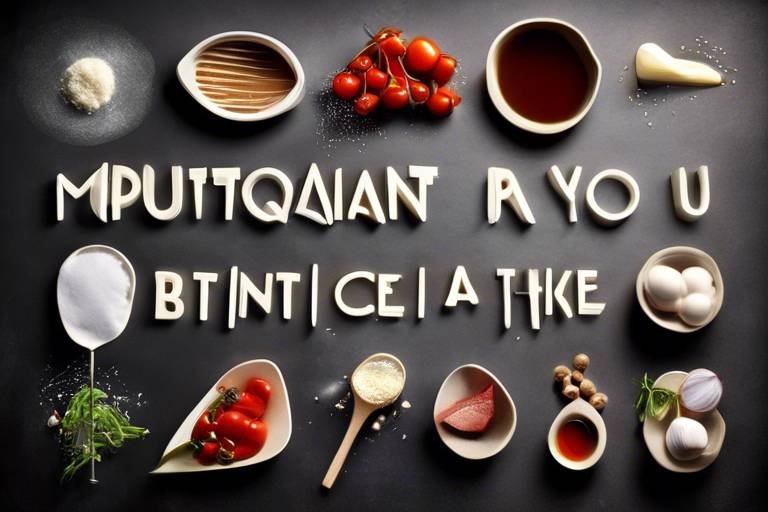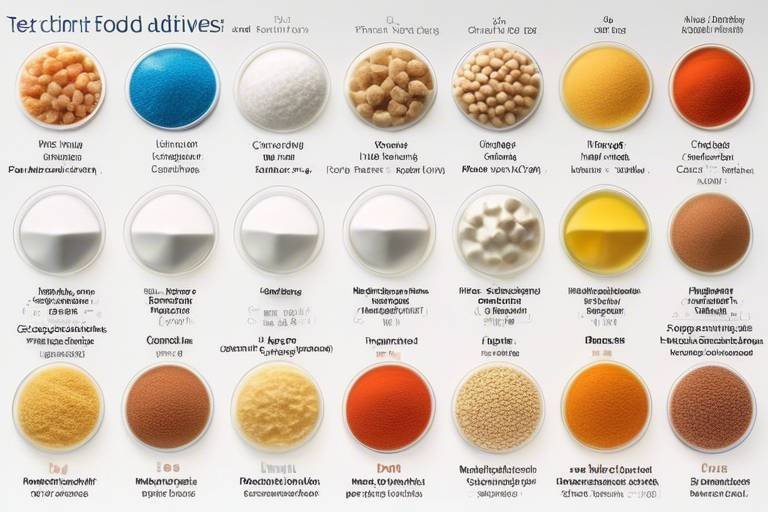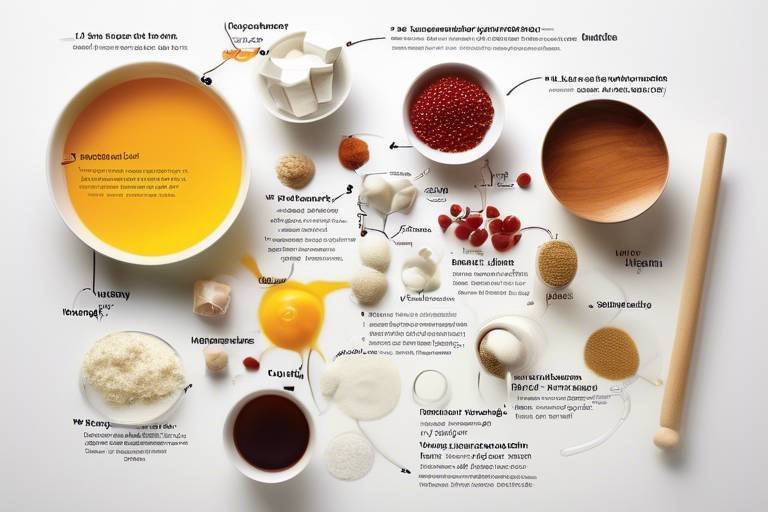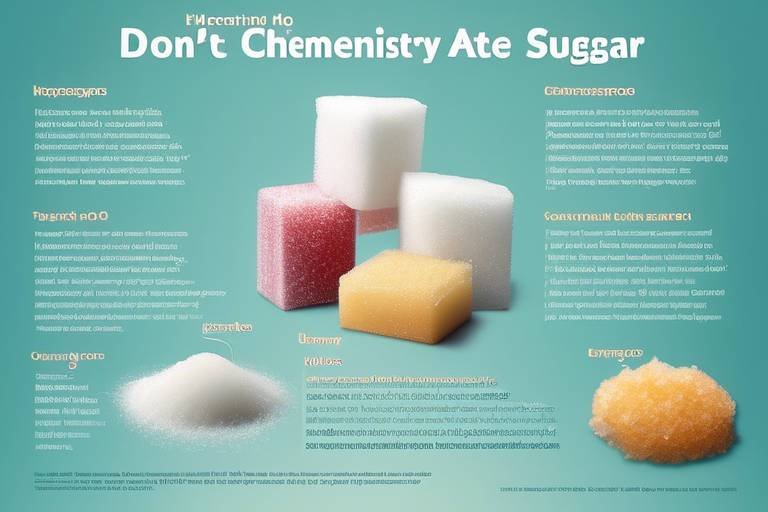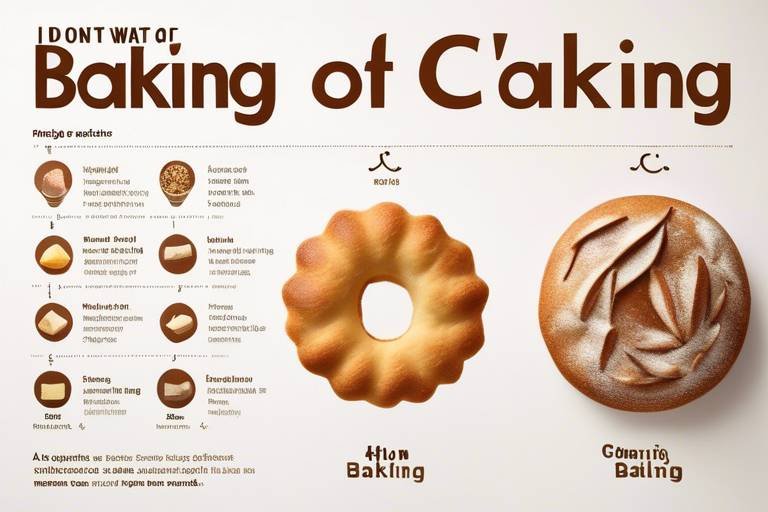The Science of Culinary Techniques - Cooking Made Better
Welcome to the fascinating world of culinary techniques! Cooking is not just about following recipes; it's a combination of art and science that can transform ordinary ingredients into extraordinary meals. Understanding the science behind cooking can significantly enhance your skills in the kitchen, allowing you to create dishes that are not only delicious but also nutritious. Whether you're a novice cook or a seasoned chef, grasping the principles of heat transfer, emulsification, and seasoning will elevate your culinary game to new heights.
Heat transfer is fundamental in cooking, affecting how food cooks and develops flavor. There are three main methods of heat transfer: conduction, convection, and radiation. Each method has its unique characteristics and applications in the kitchen. For instance, conduction occurs when heat is directly transferred from one surface to another, such as when you sear a steak in a hot pan. Convection involves the movement of heat through liquids or gases, which is why baking in an oven can yield evenly cooked dishes. Radiation, on the other hand, is the transfer of heat through electromagnetic waves, like grilling or broiling. Understanding these methods can help you choose the right cooking technique for your ingredients, enhancing their texture and flavor.
Emulsification is a crucial technique in the culinary arts, especially when creating stable mixtures like dressings and sauces. An emulsion is formed when two ingredients that typically do not mix, such as oil and water, are combined with the help of an emulsifier. This section explores the science behind emulsifiers and offers techniques to achieve perfect emulsions in your culinary creations.
Different emulsifiers serve unique purposes in cooking. They can be categorized into two main types: natural and synthetic emulsifiers. Natural emulsifiers, like egg yolks and mustard, provide flavor alongside stability, while synthetic emulsifiers, commonly found in commercial products, offer consistency and shelf stability. Choosing the right emulsifier can make all the difference in the texture and taste of your sauces and dressings.
Natural emulsifiers, such as egg yolks and mustard, are not only effective but also enhance the flavor of your dishes. For example, when making mayonnaise, the lecithin in egg yolks acts as a bridge between oil and vinegar, creating a creamy texture. To effectively use these ingredients in your recipes, it's essential to incorporate them at the right temperature and in the correct order. This ensures that the emulsion forms properly, yielding a stable and delicious result.
Synthetic emulsifiers, like mono- and diglycerides, are often used in commercial products to maintain consistency and prolong shelf life. While they can be beneficial, it's important to understand their applications and limitations. Knowing when to use synthetic emulsifiers can help you create products that have a longer shelf life without compromising on taste or quality.
Mastering emulsification techniques can elevate your cooking to new heights. Some common methods include whisking, blending, and even using a food processor. For instance, whisking vigorously can help create a stable emulsion by incorporating air and breaking down the oil into smaller droplets. On the other hand, blending in a food processor allows for a more uniform mixture, perfect for creating creamy dressings. Experimenting with these techniques will ensure your sauces and dressings are always a success.
Seasoning is an art that can make or break a dish. It enhances flavors and brings out the best in your ingredients. Understanding the science behind salt, herbs, and spices is essential for improving taste. For example, salt not only enhances flavor but also affects the texture of food. It can draw out moisture, making vegetables crisper and meats juicier. Knowing how to use different types of salt—like kosher, sea salt, and table salt—can elevate your cooking.
Salt plays multiple roles in cooking, from enhancing flavor to affecting texture. Different types of salt have unique properties and applications in culinary practices. For example, kosher salt is often favored by chefs for its ease of use and ability to season food evenly. In contrast, sea salt, with its larger crystals, can add a delightful crunch and burst of flavor when used as a finishing touch. Understanding these differences can help you choose the right salt for your dishes.
Herbs and spices add depth and complexity to your dishes, transforming simple ingredients into culinary masterpieces. Each herb and spice has its own flavor profile, and understanding these can help you create balanced and harmonious dishes. For instance, basil and oregano are perfect for Italian cuisine, while cumin and coriander shine in Indian dishes. Learning how to incorporate these flavor enhancers into your cooking repertoire will open up a world of possibilities and elevate your meals.
- What is the best way to store herbs? Fresh herbs should be stored in the refrigerator, either wrapped in a damp paper towel or in a glass of water like a bouquet.
- How can I tell if my emulsions are stable? A stable emulsion will have a smooth, creamy texture and will not separate over time. If separation occurs, it may need re-whisking or blending.
- Can I use synthetic emulsifiers in home cooking? Yes, but it's generally recommended to stick with natural emulsifiers for home cooking to maintain flavor and health benefits.

Understanding Heat Transfer
This article explores various culinary techniques and their scientific foundations, enhancing your cooking skills and understanding of food preparation methods for delicious and nutritious meals.
Heat transfer is fundamental in cooking, affecting how food cooks and ultimately influences the texture and flavor of your dishes. Understanding the three main types of heat transfer—conduction, convection, and radiation—is essential for any aspiring chef. Each method has its unique characteristics, and knowing how they work can help you make informed decisions in the kitchen.
Conduction occurs when heat is directly transferred from one substance to another. Imagine a hot pan sizzling as you place a steak on it; the heat from the pan travels directly to the meat, cooking it from the outside in. This method is crucial for achieving a perfect sear and developing those delicious Maillard reactions that create complex flavors. To maximize conduction, it's important to use materials with good thermal conductivity, like copper or aluminum.
On the other hand, convection involves the movement of heat through a fluid—this could be air or liquid. Think of a pot of boiling water: as the water heats up, it rises to the surface while cooler water descends. This cycle creates an even cooking environment, making convection ideal for baking and roasting. Ovens often use fans to enhance convection, distributing heat more evenly and cooking food faster.
Lastly, we have radiation, which is a bit different from the previous two methods. This form of heat transfer occurs through electromagnetic waves. A perfect example is grilling, where the heat from the flames radiates directly to the food. This method is great for imparting a smoky flavor and achieving that perfect char. Understanding how to harness these three types of heat transfer can significantly elevate your culinary skills.
To summarize, here’s a quick table that outlines the three types of heat transfer:
| Type of Heat Transfer | Definition | Example |
|---|---|---|
| Conduction | Direct heat transfer through contact. | Searing meat in a hot pan. |
| Convection | Heat transfer through a fluid (liquid or gas). | Boiling water or baking in a convection oven. |
| Radiation | Heat transfer through electromagnetic waves. | Grilling over an open flame. |
By mastering these heat transfer techniques, you'll not only improve your cooking efficiency but also enhance the flavors and textures of your meals. So, the next time you step into the kitchen, remember that how you apply heat can make a world of difference in your culinary creations!
Emulsification is crucial for creating stable mixtures like dressings and sauces. Here, we explore the science behind emulsifiers and techniques to achieve perfect emulsions in your culinary creations.
Different emulsifiers serve unique purposes in cooking. This subsection discusses natural and synthetic emulsifiers, their properties, and how to choose the right one for your dish.
Natural emulsifiers, such as egg yolks and mustard, offer flavor alongside stability. This section examines how to effectively use these ingredients in your recipes for optimal results.
Synthetic emulsifiers, found in commercial products, provide consistency and shelf stability. Here, we look at common synthetic emulsifiers and their applications in the culinary world.
Mastering emulsification techniques can elevate your cooking. This part outlines methods such as whisking and blending to create stable emulsions, ensuring your sauces and dressings are always a success.
Seasoning is an art that enhances flavors in cooking. This section discusses the science behind salt, herbs, and spices, and how to use them effectively for improved taste.
Salt plays multiple roles in cooking, from enhancing flavor to affecting texture. This subsection explores the different types of salt and their specific applications in culinary practices.
Herbs and spices add depth and complexity to dishes. Here, we discuss the science behind their flavor profiles and how to best incorporate them into your cooking repertoire.
- What is the best method for cooking steak?
The best method often depends on personal preference. For a great sear, use conduction with a hot pan, while for tenderness, consider sous vide cooking followed by a quick sear.
- How can I improve my baking skills?
Understanding convection is key. Ensure your oven is preheated and consider using an oven thermometer to maintain consistent temperatures.
- What are some common natural emulsifiers?
Egg yolks, mustard, and honey are excellent natural emulsifiers that add flavor and stability to your mixtures.
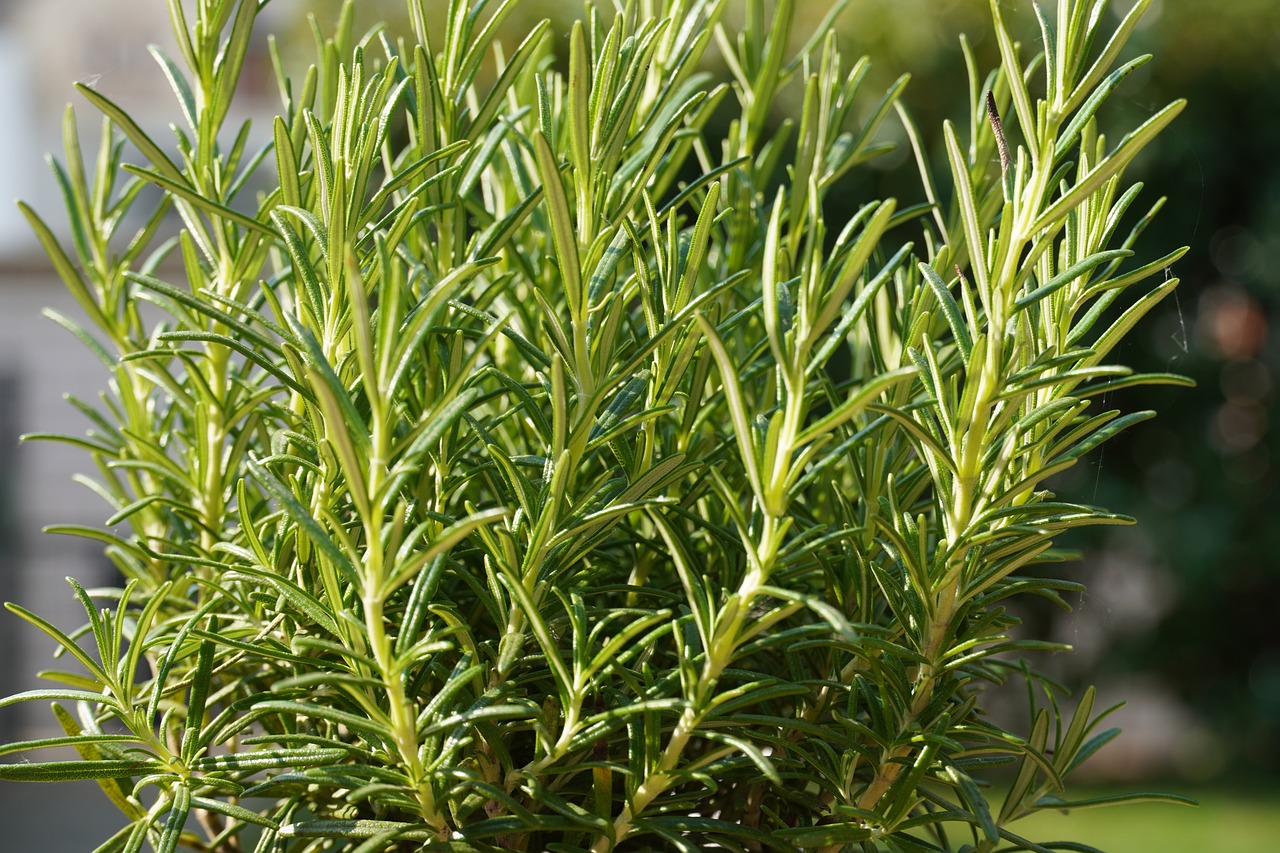
The Role of Emulsification
Emulsification is a fascinating process that plays a crucial role in the culinary world. It’s the secret behind many of your favorite dressings, sauces, and even some desserts. But what exactly is emulsification? In simple terms, it’s the mixing of two liquids that usually don’t blend well together, like oil and water. Think of it as a dance between two partners who initially struggle to find their rhythm but eventually create a beautiful performance together. Understanding the science behind emulsification can elevate your cooking, allowing you to create dishes that are not only delicious but also visually appealing.
At its core, emulsification relies on the use of emulsifiers—substances that help stabilize the mixture of oil and water. Without emulsifiers, your vinaigrette would separate into a puddle of oil floating atop vinegar, making for an unappetizing presentation. The magic happens when you introduce an emulsifier, which reduces the surface tension between the two liquids, allowing them to combine into a smooth, creamy mixture. This is why mastering the art of emulsification is essential for any aspiring chef.
There are two main types of emulsions: temporary and permanent. Temporary emulsions, like those created in a simple vinaigrette, require vigorous shaking or whisking to maintain their blend. However, they will eventually separate if left to sit. On the other hand, permanent emulsions, such as mayonnaise, remain stable for much longer due to the presence of strong emulsifiers. Understanding these differences can help you choose the right method for your culinary creations.
To achieve a perfect emulsion, consider the following techniques:
- Whisking: This method involves vigorously mixing the oil and water together, often with an emulsifier like egg yolk or mustard, to create a stable mixture.
- Blending: Using a blender or food processor can achieve a more thorough emulsion, especially for thicker sauces like aioli.
- Drizzling: When adding oil to vinegar or another liquid, drizzle it in slowly while whisking to help the emulsion form gradually.
By mastering these techniques and understanding the role of emulsifiers, you can create a range of delicious sauces and dressings that enhance your meals. Whether you’re tossing a fresh salad or preparing a gourmet dish, emulsification is your ally in achieving that perfect balance of flavors and textures.
Q1: What is an emulsion?
An emulsion is a mixture of two liquids that typically do not mix, such as oil and water, stabilized by an emulsifier.
Q2: What are some common emulsifiers?
Common emulsifiers include egg yolks, mustard, and honey. These ingredients help stabilize the mixture and prevent separation.
Q3: How can I prevent my emulsions from breaking?
To prevent breaking, ensure that you add the oil slowly while whisking continuously. Using a blender can also help create a more stable emulsion.

Types of Emulsifiers
When it comes to emulsification, understanding the available can significantly enhance your culinary creations. Emulsifiers are substances that help to blend ingredients that typically don't mix well, such as oil and water. They work by reducing the surface tension between the two liquids, allowing them to combine into a stable mixture. There are two primary categories of emulsifiers: natural emulsifiers and synthetic emulsifiers. Each type has its unique properties and applications, making it essential to choose the right one for your dish.
Natural emulsifiers are derived from natural sources and often come with added flavors and nutrients. For instance, egg yolks contain lecithin, a powerful emulsifier that not only stabilizes mixtures but also enhances the richness of sauces like mayonnaise. Similarly, mustard is another popular natural emulsifier, often used in salad dressings. These emulsifiers not only provide stability but also contribute to the overall taste profile of the dish.
On the other hand, synthetic emulsifiers are commonly found in commercial products. They are engineered to provide consistency and improve shelf life. Ingredients like mono- and diglycerides, polysorbates, and lecithin derived from soy are frequently used in processed foods. While they may not offer the same flavor benefits as their natural counterparts, they play a crucial role in ensuring that your sauces, dressings, and baked goods maintain their desired texture over time.
Choosing the right emulsifier can be likened to picking the perfect partner for a dance; the right match can create a beautiful performance in the kitchen. Here’s a quick comparison of the two types:
| Emulsifier Type | Source | Flavor Contribution | Common Uses |
|---|---|---|---|
| Natural Emulsifiers | Egg yolks, mustard, honey | Enhances flavor | Mayonnaise, salad dressings |
| Synthetic Emulsifiers | Mono- and diglycerides, polysorbates | Neutral | Processed foods, baked goods |
In conclusion, understanding the different types of emulsifiers can empower you to create dishes that are not only stable but also bursting with flavor. Whether you opt for a natural emulsifier to enhance taste or a synthetic one for consistency, mastering the art of emulsification is a valuable skill that will take your cooking to the next level.
- What is an emulsifier? An emulsifier is a substance that helps to mix two immiscible liquids, such as oil and water, creating a stable mixture.
- Can I use natural emulsifiers in place of synthetic ones? Yes, natural emulsifiers can often replace synthetic ones, but they may also alter the flavor and texture of your dish.
- How do I know which emulsifier to use? The choice of emulsifier depends on the desired flavor, texture, and the specific requirements of your recipe.
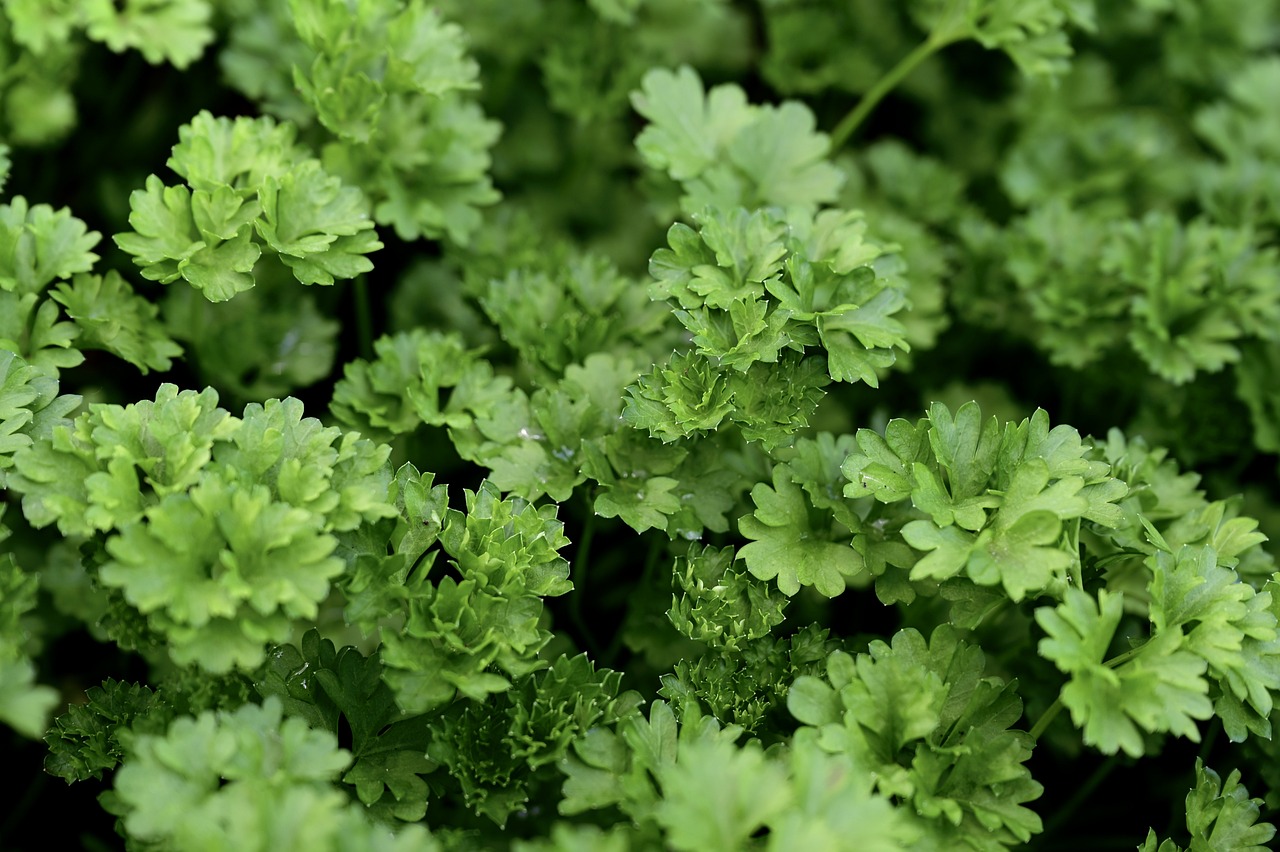
Natural Emulsifiers
When it comes to achieving that perfect blend in your sauces and dressings, are your best friends. These ingredients not only stabilize mixtures but also add a burst of flavor that can elevate your dishes to new heights. Think of them as the glue that holds your culinary creations together, ensuring that oil and water don’t just coexist but dance harmoniously on your palate.
One of the most popular natural emulsifiers is egg yolk. Rich in lecithin, egg yolks can effortlessly bind oil and vinegar in a classic mayonnaise or aioli. The magic lies in the way lecithin molecules arrange themselves; they have a hydrophilic (water-attracting) head and a hydrophobic (water-repelling) tail, allowing them to bridge the gap between oil and water. When whisked together, the yolk creates a stable emulsion that can withstand the test of time—well, at least until it’s devoured!
Another fantastic natural emulsifier is mustard. Not only does it bring a tangy flavor to the table, but it also contains mucilage, a substance that helps keep oil and water mixed. Mustard works wonders in vinaigrettes and dressings, giving them a delightful creaminess without the need for heavy creams or mayonnaise. Plus, who doesn’t love a little extra zing in their salad?
Let’s not forget about honey, which can also act as a natural emulsifier. It’s particularly effective in dressings where a touch of sweetness is desired. Honey’s viscosity helps to keep oil and vinegar blended, making it a great addition to your culinary toolkit. Just remember, a little goes a long way!
To summarize, here’s a quick look at some common natural emulsifiers and their applications:
| Natural Emulsifier | Source | Common Uses |
|---|---|---|
| Egg Yolk | Chicken Eggs | Mayonnaise, Aioli, Hollandaise |
| Mustard | Seeds (e.g., yellow, Dijon) | Vinaigrettes, Dressings |
| Honey | Bees | Dressings, Marinades |
Using these natural emulsifiers can transform your cooking, making it not just about flavors but also about the science behind them. When you master the art of emulsification, you’re not just following a recipe; you’re creating a symphony of tastes and textures that will leave your guests asking for seconds!
Q1: What is the main purpose of an emulsifier in cooking?
A: Emulsifiers help to stabilize mixtures of oil and water, preventing them from separating and enhancing the overall texture and flavor of sauces and dressings.
Q2: Can I use any type of mustard as an emulsifier?
A: Yes, both yellow mustard and Dijon mustard can be used as emulsifiers, but they will impart different flavors, so choose based on your desired taste profile.
Q3: Are there any alternatives to natural emulsifiers?
A: Yes, synthetic emulsifiers are available, but many chefs prefer natural options for their flavor and health benefits.
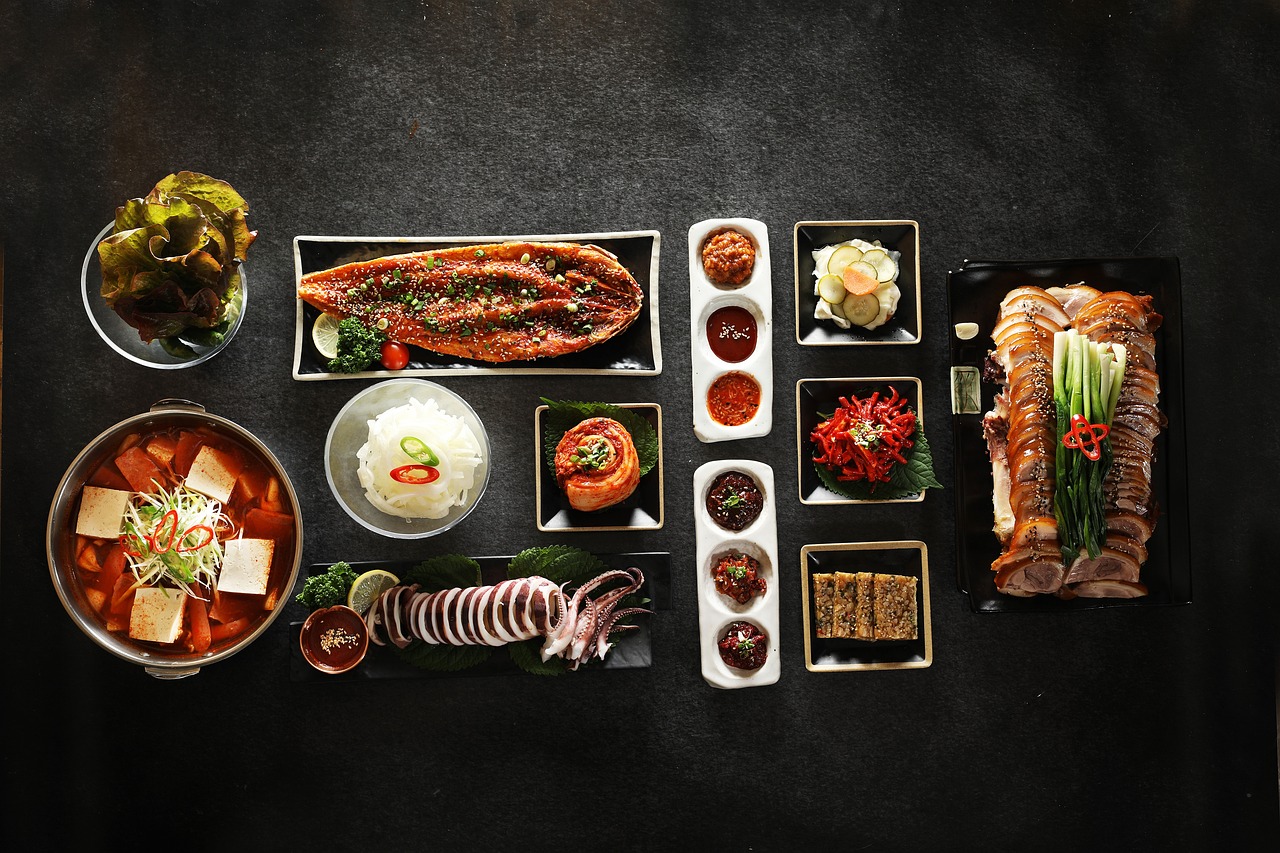
Synthetic Emulsifiers
Synthetic emulsifiers are fascinating ingredients that play a vital role in modern cooking and food production. These chemical compounds help stabilize mixtures that would otherwise separate, such as oil and water. By using synthetic emulsifiers, chefs and food manufacturers can create products with consistent textures and extended shelf lives, making them essential in both home kitchens and commercial settings. But what exactly are these emulsifiers, and how do they work?
To understand synthetic emulsifiers, it's important to know that they are typically derived from natural sources but undergo chemical processes to enhance their emulsifying properties. Common examples include mono- and diglycerides, polysorbates, and sodium stearoyl lactylate. These compounds are often found in salad dressings, mayonnaise, ice creams, and baked goods, ensuring that the ingredients remain well-blended and appealing to the eye.
One of the key benefits of synthetic emulsifiers is their ability to create stable emulsions with a smooth texture, which is particularly important in products like sauces and dressings. For instance, polysorbate 80 is frequently used in ice cream to prevent ice crystals from forming, resulting in a creamy texture that melts in your mouth. Similarly, mono- and diglycerides can help maintain the freshness of baked goods by preventing the separation of fats, which can lead to staleness.
However, while synthetic emulsifiers offer many advantages, they also come with some considerations. For those who prefer a more natural approach to cooking, the presence of synthetic additives can be a deterrent. It’s crucial to read labels and understand the ingredients in your food. Additionally, some people may have sensitivities to certain emulsifiers, leading to digestive discomfort. Therefore, it’s wise to experiment and find what works best for your body and cooking style.
In summary, synthetic emulsifiers are powerful tools in the culinary world, providing stability and consistency to a variety of food products. They allow chefs to create delightful dishes that are visually appealing and texturally satisfying. As you explore the world of cooking, consider how these emulsifiers can enhance your creations while also being mindful of your personal preferences and dietary needs.
- What are synthetic emulsifiers made of? Synthetic emulsifiers are typically derived from natural sources and undergo chemical processes to enhance their emulsifying properties.
- Are synthetic emulsifiers safe to consume? Yes, synthetic emulsifiers are generally recognized as safe by food safety authorities, but it's important to be aware of personal sensitivities.
- Can I substitute synthetic emulsifiers with natural ones? Yes, you can use natural emulsifiers like egg yolks or mustard, but the texture and stability may vary.

Emulsification Techniques
Mastering emulsification techniques can truly elevate your culinary game. Emulsification is the process of mixing two liquids that usually don’t mix well, like oil and water. Think of it as trying to blend two stubborn friends at a party; they just don’t want to mingle! However, with the right techniques, you can create beautiful, stable emulsions that will take your sauces and dressings from bland to grand.
One of the most popular methods for emulsification is whisking. When you whisk, you’re introducing air into the mixture, which helps to break down the fat molecules in the oil. This process allows them to disperse evenly throughout the water phase, creating a smooth and creamy texture. For instance, when making a classic vinaigrette, start by whisking together your vinegar and seasonings before slowly drizzling in the oil. The key here is to add the oil gradually while whisking vigorously; this creates a fine emulsion that won’t separate.
Another effective technique is using a blender. This method is particularly useful for larger quantities or when you want a super smooth emulsion. In a blender, the high-speed blades create a whirlpool effect that pulls the ingredients together, ensuring a consistent mixture. For example, when making mayonnaise, you can blend egg yolks and mustard, then slowly pour in the oil while the blender is running. This not only emulsifies the mixture but also incorporates air, giving your mayonnaise a light and fluffy texture.
It’s worth noting that temperature plays a crucial role in emulsification. Ingredients that are at similar temperatures tend to emulsify better. For instance, if you’re using cold oil and warm vinegar, they might resist blending. So, a little tip: try to bring your ingredients to room temperature before mixing. This simple step can make a world of difference!
Lastly, don’t overlook the power of stabilizers. Ingredients like egg yolks, mustard, or even honey can help stabilize your emulsion. They contain proteins or emulsifiers that act as a bridge between the oil and water, making it easier for them to mix. When you’re experimenting with emulsions, consider incorporating these stabilizers to enhance the texture and flavor of your sauces.
In conclusion, whether you’re whisking, blending, or using stabilizers, mastering emulsification techniques will open up a world of culinary possibilities. Imagine drizzling a perfectly emulsified balsamic vinaigrette over a fresh salad or serving a creamy homemade mayonnaise with your sandwiches. With a little practice, you’ll be able to create delicious and stable emulsions that will impress your family and friends!
- What is emulsification? Emulsification is the process of mixing two liquids that normally do not mix, such as oil and water, to create a stable mixture.
- Can I use a hand whisk instead of a blender for emulsification? Absolutely! A hand whisk works well, especially for smaller quantities. Just make sure to whisk vigorously and add the oil slowly.
- What are some common emulsifiers? Common emulsifiers include egg yolks, mustard, and honey, which help stabilize the mixture.
- Why is temperature important in emulsification? Ingredients at similar temperatures tend to emulsify better, preventing separation and ensuring a smooth texture.
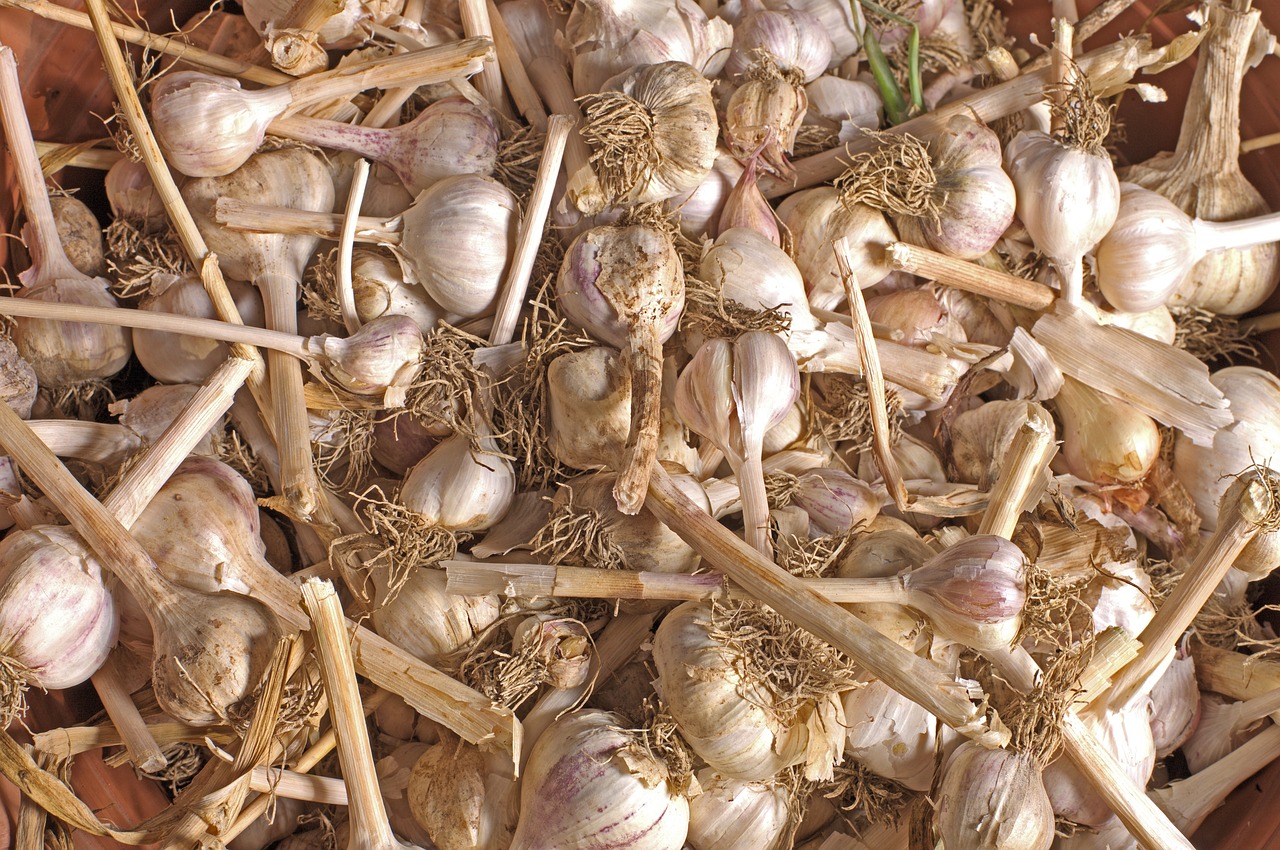
The Importance of Seasoning
Seasoning is not just a mere afterthought in cooking; it's an art form that can elevate your dishes from bland to extraordinary. Think of seasoning as the magic wand that transforms simple ingredients into a symphony of flavors. Whether you're preparing a humble vegetable soup or an extravagant gourmet meal, the right seasoning can make all the difference. So, what exactly is seasoning, and why is it so crucial in the culinary world?
At its core, seasoning involves the addition of ingredients like salt, herbs, and spices to enhance the natural flavors of food. Each seasoning has its unique properties and functions, which can affect not only the taste but also the texture and aroma of your dishes. For instance, salt is often referred to as the universal flavor enhancer. It doesn't just add saltiness; it also helps to bring out the inherent flavors of the ingredients, making them more pronounced. Without the right amount of seasoning, even the finest ingredients can taste lackluster and uninviting.
Let’s dive deeper into the science behind seasoning, starting with the versatile ingredient that is salt. Did you know that there are various types of salt, each with its own unique flavor profile and texture? Here’s a quick overview:
| Type of Salt | Texture | Common Uses |
|---|---|---|
| Table Salt | Fine | General cooking and baking |
| Sea Salt | Coarse | Finishing dishes, seasoning |
| Himalayan Pink Salt | Coarse | Garnishing, cooking |
| Kosher Salt | Flaky | Brining, seasoning meats |
Each type of salt brings something special to the table, and understanding their differences can help you choose the right one for your culinary creations. For example, kosher salt is favored by many chefs for its ease of use and ability to adhere to food, making it perfect for seasoning meats before cooking.
Now, let’s not forget about the aromatic world of herbs and spices. These tiny powerhouses can add depth and complexity to your dishes. Think of herbs as the greenery that brings freshness, while spices add a kick of flavor. The science behind their flavor profiles is fascinating; for instance, some herbs are best used fresh, while others can be dried without losing their essence. Here’s a quick look at some popular herbs and spices:
- Basil: Fresh basil is great in salads and sauces, while dried basil is perfect for cooking.
- Oregano: A staple in Italian cuisine, it adds warmth and earthiness.
- Cumin: Often used in Middle Eastern and Indian dishes, it provides a nutty flavor.
- Cinnamon: Not just for desserts, it can add warmth to savory dishes as well.
Incorporating these herbs and spices into your cooking is not just about flavor; it's also about understanding how they interact with other ingredients. For example, pairing rosemary with roasted meats can create a delicious harmony, while using too much can overpower the dish. It's all about balance!
So, the next time you're in the kitchen, remember that seasoning is your secret weapon. It's what turns a simple meal into a culinary masterpiece. Don’t be afraid to experiment with different combinations of herbs, spices, and salts to find your unique flavor profile. After all, cooking is as much about creativity as it is about following recipes. Embrace the art of seasoning, and watch your cooking skills soar!
- What is the best way to season food? Start with a little salt and taste as you go. Gradually add herbs and spices to find the right balance.
- Can I use dried herbs instead of fresh? Yes, but remember that dried herbs are often more concentrated, so use less.
- How do I know if I’ve seasoned enough? Taste your dish periodically during cooking. It should enhance the flavors without being overpowering.
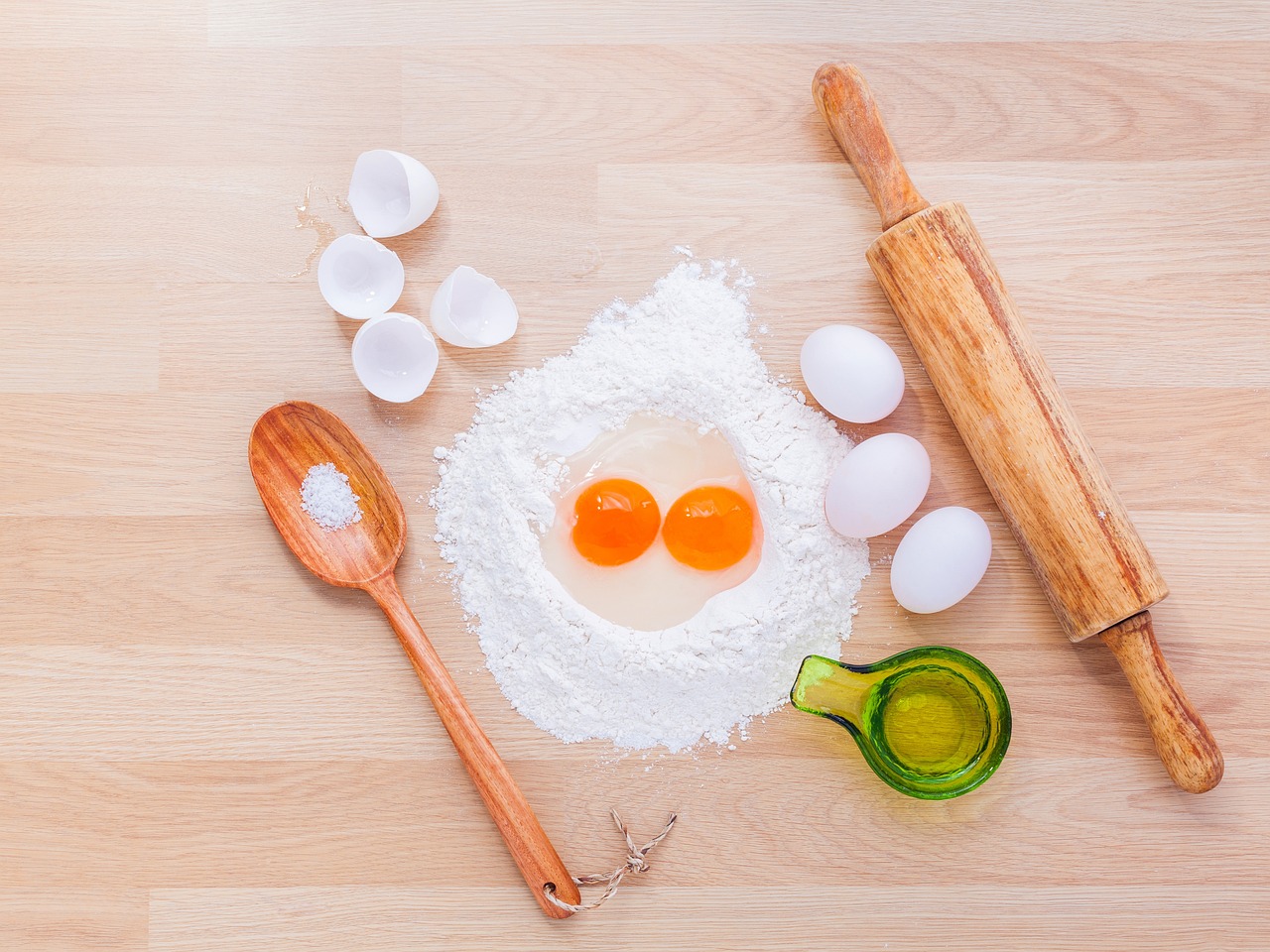
Salt and its Functions
When we think about cooking, salt might seem like a simple ingredient, but its role is anything but basic. In fact, salt is often regarded as the unsung hero of the culinary world. It does more than just add flavor; it transforms the very essence of food. You see, salt is a powerful seasoning that enhances the natural flavors of ingredients, making them pop in ways that can leave your taste buds dancing. But how does it achieve this magical effect? Let's dive into the science behind salt and its multifaceted functions in cooking.
One of the primary functions of salt is to enhance flavor. When you sprinkle a pinch of salt on your dish, it interacts with the food's molecules, amplifying its natural taste. This is why a little salt can make a world of difference in a bland dish. It’s like turning up the volume on your favorite song; suddenly, everything becomes more vibrant and exciting. However, not all salts are created equal. There are various types of salt, each with its unique characteristics and uses. Here’s a quick overview:
| Type of Salt | Characteristics | Common Uses |
|---|---|---|
| Table Salt | Fine granules, often iodized | Everyday cooking and baking |
| Sea Salt | Coarse texture, harvested from evaporated seawater | Finishing dishes, seasoning |
| Himalayan Pink Salt | Mineral-rich, visually striking pink color | Garnishing, grilling, and health benefits |
| Kosher Salt | Flaky texture, ideal for seasoning meats | Brining, seasoning |
Another fascinating function of salt is its ability to alter the texture of food. When used in brining, salt draws moisture into meat, resulting in a juicy and flavorful final product. This process, known as osmosis, allows salt to penetrate the meat, enhancing not just flavor but also tenderness. Imagine biting into a perfectly seasoned steak that practically melts in your mouth; that's the magic of salt at work!
Moreover, salt plays a crucial role in fermentation, a process that has been used for centuries to preserve food and develop complex flavors. When making pickles or sauerkraut, for instance, salt helps create the ideal environment for beneficial bacteria to thrive, resulting in a tangy, delicious product. It’s a beautiful dance of science and flavor, where salt acts as both a preservative and a flavor enhancer.
In addition to these functions, salt can also impact the color of food. When used in cooking vegetables, for example, salt can help maintain their vibrant colors, making your dishes visually appealing. Ever noticed how a sprinkle of salt can keep your green beans looking bright and fresh? This is due to the way salt interacts with the food's cellular structure, preventing discoloration.
In summary, salt is much more than a simple seasoning; it's a vital component that enhances flavor, alters texture, aids in fermentation, and preserves color. Understanding the various functions of salt can elevate your cooking and transform your meals from ordinary to extraordinary. So, the next time you reach for that salt shaker, remember that you’re not just adding flavor; you’re wielding a powerful tool that can unlock the full potential of your ingredients.
- What is the best type of salt to use in cooking? It depends on your recipe! For general cooking, table salt or kosher salt is great. For finishing dishes, consider using sea salt or Himalayan pink salt for added flavor and texture.
- Can I use less salt in my cooking? Absolutely! You can experiment with herbs, spices, and other flavor enhancers to reduce salt while still achieving a delicious taste.
- Does salt really help with food preservation? Yes! Salt inhibits the growth of bacteria, making it an effective preservative in various foods, especially in pickling.
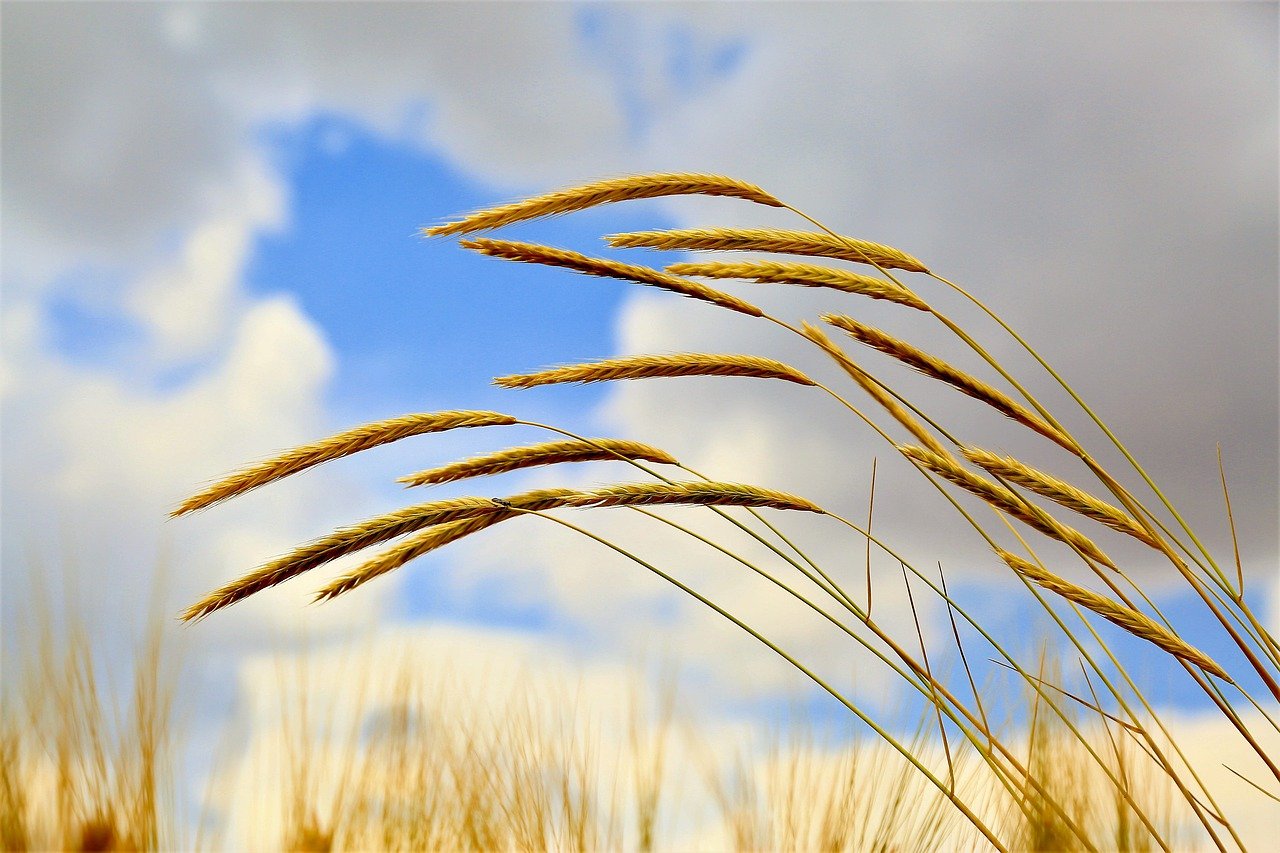
Herbs and Spices
When it comes to cooking, are the unsung heroes that can elevate a dish from mundane to magnificent. They are nature's flavor enhancers, offering complexity and depth to your meals. Imagine biting into a perfectly roasted chicken; the aroma of rosemary wafting through the air, or savoring a bowl of chili where cumin and paprika dance on your taste buds. This is the magic that herbs and spices bring to the table. But what makes them so special? Let’s dive into the science behind these culinary powerhouses.
Herbs are typically the green, leafy parts of plants, while spices come from other parts such as seeds, roots, and bark. Understanding the difference is crucial, but it’s their unique flavor compounds that make them truly remarkable. For instance, basil contains essential oils that provide its sweet and slightly peppery flavor, while cinnamon derives its warmth from a compound called coumarin. These compounds not only affect flavor but also impact aroma, which is a significant part of our overall taste experience.
Incorporating herbs and spices into your cooking isn't just about flavor; it's also a way to enhance the nutritional value of your meals. Many herbs and spices are packed with antioxidants and anti-inflammatory properties. For example, turmeric is celebrated for its curcumin content, known for its health benefits, while garlic is renowned for its immune-boosting properties. By adding these ingredients to your dishes, you’re not just seasoning; you’re also nourishing your body.
To get the most out of your herbs and spices, consider the following tips:
- Fresh vs. Dried: Fresh herbs often have a brighter flavor compared to their dried counterparts. However, dried herbs can be more potent, so use them wisely.
- Timing: Add delicate herbs like basil and parsley towards the end of cooking to preserve their flavor, while sturdier herbs like thyme and rosemary can withstand longer cooking times.
- Storage: Keep your herbs and spices in a cool, dark place to maintain their potency. Avoid storing them above the stove where heat can degrade their quality.
Experimentation is key when using herbs and spices. Don’t be afraid to mix and match! For instance, a sprinkle of coriander can brighten up a curry, while a dash of nutmeg can add warmth to a creamy sauce. The possibilities are endless, and the only limit is your imagination.
In conclusion, herbs and spices are not just mere ingredients; they are the essence of culinary creativity. By understanding their unique properties and learning how to use them effectively, you can transform ordinary dishes into extraordinary culinary experiences. So next time you cook, remember to reach for that jar of spices or a handful of fresh herbs and let your taste buds embark on a flavorful adventure!
Q: What's the difference between herbs and spices?
A: Herbs are typically the green, leafy parts of plants, while spices come from other parts such as seeds, roots, and bark.
Q: How should I store my herbs and spices?
A: Store them in a cool, dark place, away from heat and moisture to maintain their potency.
Q: Can I use dried herbs instead of fresh ones?
A: Yes, but remember that dried herbs are usually more concentrated, so use them in smaller amounts.
Q: How can I enhance the flavor of my dishes?
A: Experiment with different combinations of herbs and spices, and consider the timing of when to add them during cooking.
Frequently Asked Questions
- What is the difference between conduction, convection, and radiation in cooking?
Conduction is the direct transfer of heat through a substance, like when a pan heats up on a stove. Convection involves the movement of heat through fluids, such as boiling water, where the hot water rises and cooler water takes its place. Radiation is the transfer of heat through electromagnetic waves, like when you use a microwave or grill. Understanding these methods helps you choose the right cooking technique for your dish!
- How do emulsifiers work in cooking?
Emulsifiers are substances that help mix two ingredients that usually don't combine well, like oil and water. They stabilize the mixture by reducing surface tension, allowing for a smooth and creamy texture. Common emulsifiers include egg yolks, mustard, and commercial products like lecithin. Knowing how to use these can elevate your sauces and dressings to restaurant-quality!
- What are some natural emulsifiers I can use in my recipes?
Natural emulsifiers like egg yolks, mustard, and honey are fantastic options. Egg yolks, for instance, contain lecithin, which binds oil and water together beautifully. Mustard not only adds flavor but also helps stabilize emulsions. Using these ingredients can enhance your dishes while keeping them wholesome and delicious!
- Are synthetic emulsifiers safe to use in cooking?
Yes, synthetic emulsifiers are generally safe for consumption and are often used in commercial food products for their consistency and shelf stability. However, it's essential to read labels and understand what you're using. If you prefer a more natural approach, you can always opt for the natural emulsifiers mentioned earlier!
- Why is seasoning so important in cooking?
Seasoning is like the magic wand of cooking! It enhances flavors, balances sweetness and acidity, and can transform a bland dish into a culinary masterpiece. Using the right amount of salt, herbs, and spices can elevate your meals, making them more enjoyable and satisfying.
- What types of salt should I use in my cooking?
There are several types of salt, including table salt, sea salt, kosher salt, and Himalayan pink salt. Each type has its unique flavor and texture. For instance, kosher salt is great for seasoning meat, while sea salt can add a nice crunch as a finishing touch. Experimenting with different salts can help you discover your personal favorites!
- How can I best incorporate herbs and spices into my cooking?
Herbs and spices can be added at different stages of cooking to achieve various flavor profiles. Fresh herbs are often best added at the end to preserve their brightness, while dried herbs can be added earlier to develop deeper flavors. Don't be afraid to experiment and find the perfect balance that suits your taste!

